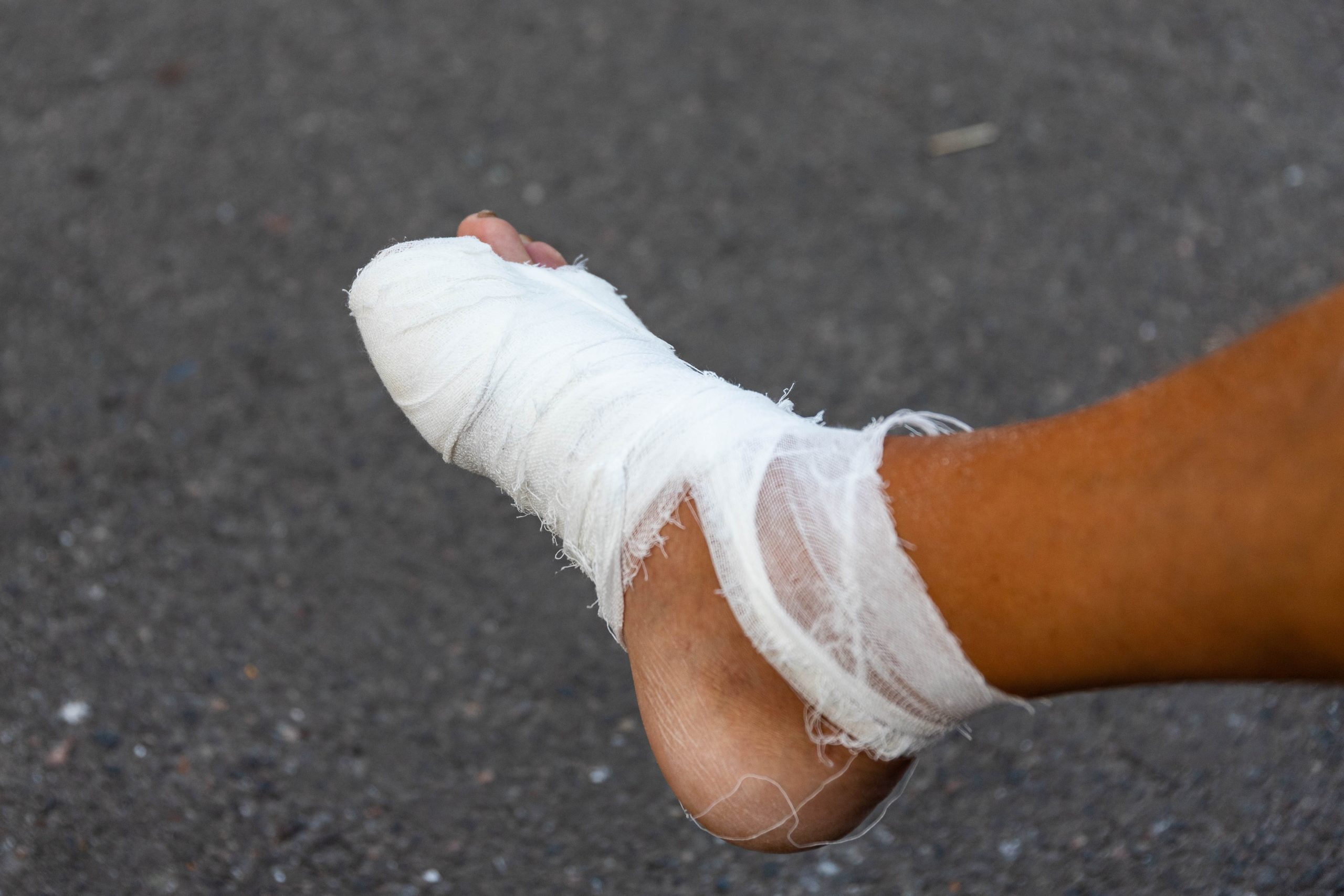An amputation is a surgical procedure that removes a limb or part of a limb.
It is usually employed when the affected limb is in danger of becoming seriously infected or poisoning the rest of the body.
While it may seem drastic, this measure is a valid last resort.
Let’s see what can lead to an amputation and how to perform it on the foot and leg.
Situations that need amputation
Whether it’s on the little toe or the entire foot, amputation can be caused by several factors.
Here are some of the ailments that can make it inevitable:
- Mechanical trauma such as a fall or car accident
- Thermal trauma like a severe burn or deep frostbite
- An untreated medical condition such as a diabetic foot or atherosclerosis
- The presence of an infection or bacteria that threatens the patient’s life
- A severe limp that causes difficulty with movement and blood disorders
- Foot tissue necrosis
- Certain cancers of the foot
In cases where trauma detaches the foot or toe, it is sometimes possible to reattach it surgically.
However, if its structures are too damaged, caregivers may consider amputation.
The elements that are taken into account before going through with an amputation
Before going through with a foot amputation, the medical team in charge of the patient considers several elements.
First, it assesses the amount of amputation required.
This decision has an impact on the chances of recovery, as well as the postoperative autonomy of the individual.
After all, the foot performs essential propulsion functions, thus the higher the incision, the less mobility the patient will have.
The potential for healing and the type of orthotic device to be prescribed also influence the decision.
The different types of foot amputations
Not all types of trauma require similar procedures.
In fact, we refer to an amputation by the category of cut that causes it.
Here are the amputation surgeries that affect the foot or part of the foot:
- Transmetatarsal amputation: this surgery aims to remove part of the forefoot from the middle of the metatarsal bones.
- Chopart amputation: while it is uncommon, this type of surgery consists of an ablation of the anterior portion of the talus and calcaneus
- Lisfranc amputation: it involves the removal of all the toes and metatarsal bones.
- Syme amputation: in this surgical procedure, the entire foot is removed by incising the joint between the leg and the foot
After any of these procedures, the doctor may recommend making a prosthesis or using special equipment.
Such a device will take over some of the functions of the foot that were lost during the amputation.
Orthopedic solutions for the amputated foot
As we have seen, amputation of the foot sometimes leads to substantial functional difficulties.
As a solution, the orthopedic surgeon can draw on the expertise of other medical professionals, such as the orthopedic technician and even the podiatrist.
The first specialist is called in to design a prosthesis to replace the missing limb or removed part of the foot.
For example:
- A silicone foot that mimics the actual shape of the foot and intervenes when only part of the foot is amputated.
- A carbon prosthesis that is well suited for athletes
- A dynamic prosthesis with subpatellar support, which serves a person after a lower leg amputation (below the knee)
The podiatrist may be consulted to address potential mechanical imbalances and suggest footwear that is more appropriate for the artificial limb or partial prosthesis.
They can then suggest devices like:
- Orthopedic shoes that stabilize the posture despite the amputation
Complications of foot amputation
It is obvious that this treatment has a strong impact on the patient’s body and overall quality of life.
The patient will have to undergo rehabilitation sessions in physiotherapy to familiarise themselves with the prosthesis or partially amputated foot.
At the same time, a new amputee should pay attention to the appearance of their symptoms, to watch out for anything that can become problematic:
- Stump pain
- Drying of the skin
- Skin that appears inflamed
- The leakage of malodorous fluid from the wound
- The opening of the surgically closed lesion
- Excessive sweating in the vicinity of the stump
- The formation of bruising or redness on the stump
- A so-called “phantom limb” discomfort in which the missing limb still appears to be present
If you notice one or more of these signs, we recommend to see a doctor immediately, to avoid possible complications.
PiedRéseau – Learn more
Are you curious to learn more about procedures similar to partial or complete amputation? We regularly publish articles on this subject!
On the other hand, even if our treatments section presents interesting information, nothing can be better than a real consultation in the clinic with your podiatrist.
Take care of your feet – they are precious!

